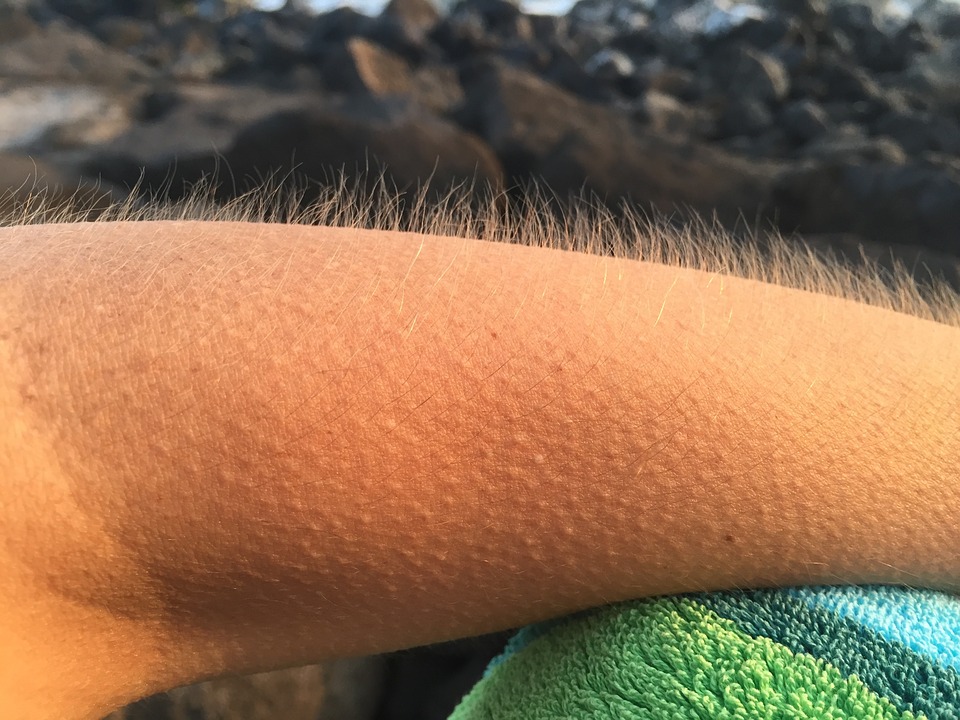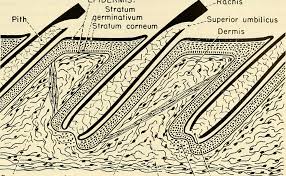
If you google “goosebumps” the first thing you get is a description of a scary kids’ movie. But that’s not what we are talking about here, although there is a connection.
The word “horror” is derived from the Latin horrere, which means to “bristle.” “Goose bumps” is the term given to the tiny bumps that arise on a persons’ skin in response to cold, fear, or even the scratching of fingernails on a blackboard. We sometimes refer to this as our hair standing on end. It comes from the plucking of a goose and seeing the many little bumps on the skin to which feathers were once attached. We have all seen a cat erect its fur as it hunches its back in a threat posture. In some dogs the hair on their back arises during an aggressive response. Porcupines erect their quills via piloerection as do dogs, causing the hair on the back of their neck to raise up. This is “piloerection” (hair standing up), caused by the contraction of the tiny muscles attached to the base of the hair or feather follicle.
Now why is it “goose bumps” rather than chicken bumps or duck bumps or some other bird? Well, there are some variations: in Hebrew it is duck skin, chicken skin in Dutch, and so on. Sticking with goose, we also find goose skin, goose lumps, goose skin, and goose flesh. And there is also chill bumps or people bumps, but the medical term is cutis anserine, the bumps on a person’s skin at the base of hairs.
Goose bumps are actually nipple-shaped feather papillae or feather buds. The reflex causing goose bumps is called the pilomotor reflex, or more interestingly, horripilation. These feather papillae or feather buds give rise to feathers. Around each papilla a cylinder of epidermal (skin) tissue forms that is called a follicle; this is where feather growth starts. Blood vessels supply the nut
 rients for feather growth, eventually closing up when the feather is fully formed. When mature, feathers are dead; the same goes for hair, fingernails, and antlers.
rients for feather growth, eventually closing up when the feather is fully formed. When mature, feathers are dead; the same goes for hair, fingernails, and antlers.
So the papillae function to form feathers, but at their base are small muscles which contract to move the papillae and thus the feathers. If you kept a parakeet at some time in your life, you are familiar with their fluffing up their feathers. They might do it in response to a perceived threat such as a dog or cat in the house, another parakeet, or just a general disturbance. The bird will also fluff up when it is ill, to avoid losing body heat. And that’s what you see in the wild most– birds sitting on a branch in the winter, appearing to be twice their normal size. They piloerect their feathers to produce air spaces between them for insulation.
Birds can also lose heat to cool themselves by fluffing their feathers even farther out so that the air reaches the skin. Birds have no sweat glands, so they can only lose heat from their respiratory system by respiration or off their skin that they expose by piloerection.
So do birds get goose bumps? What do you think?
The males or certain songbird species will fluff up a little bit of the feathers on their heads when other birds of the same kind are around. If goose bumps are a response to threats, then that feather fluffing could be called goose bumps.